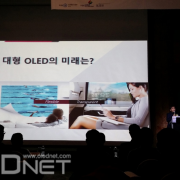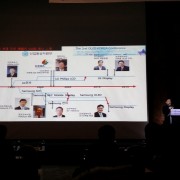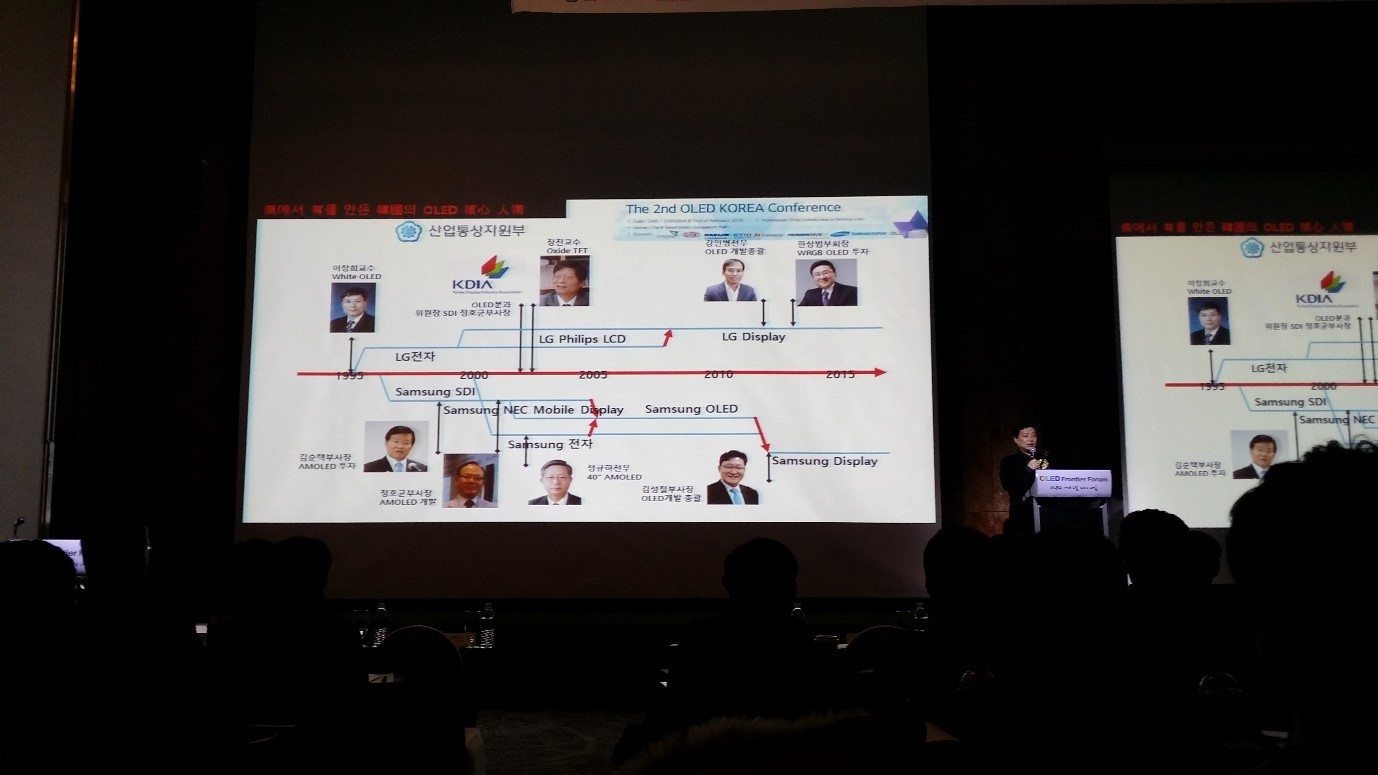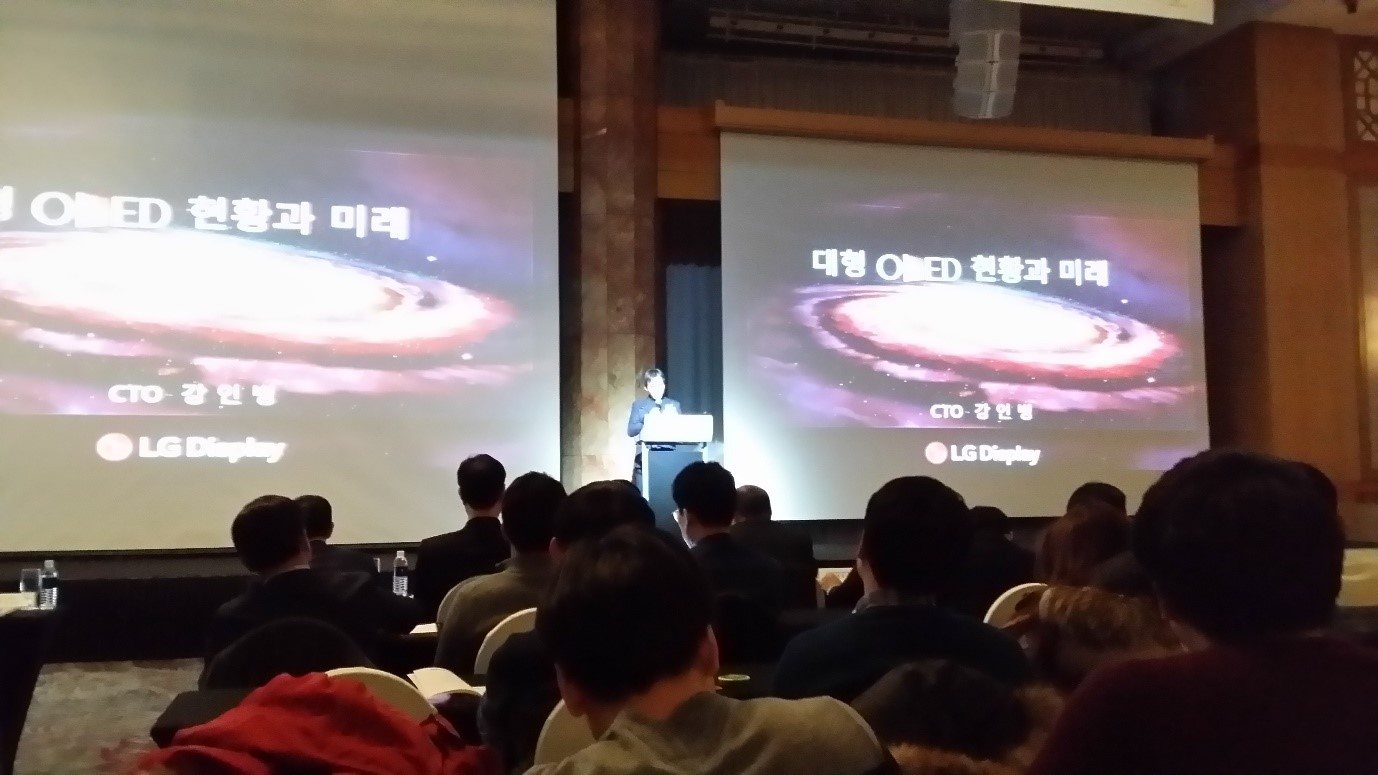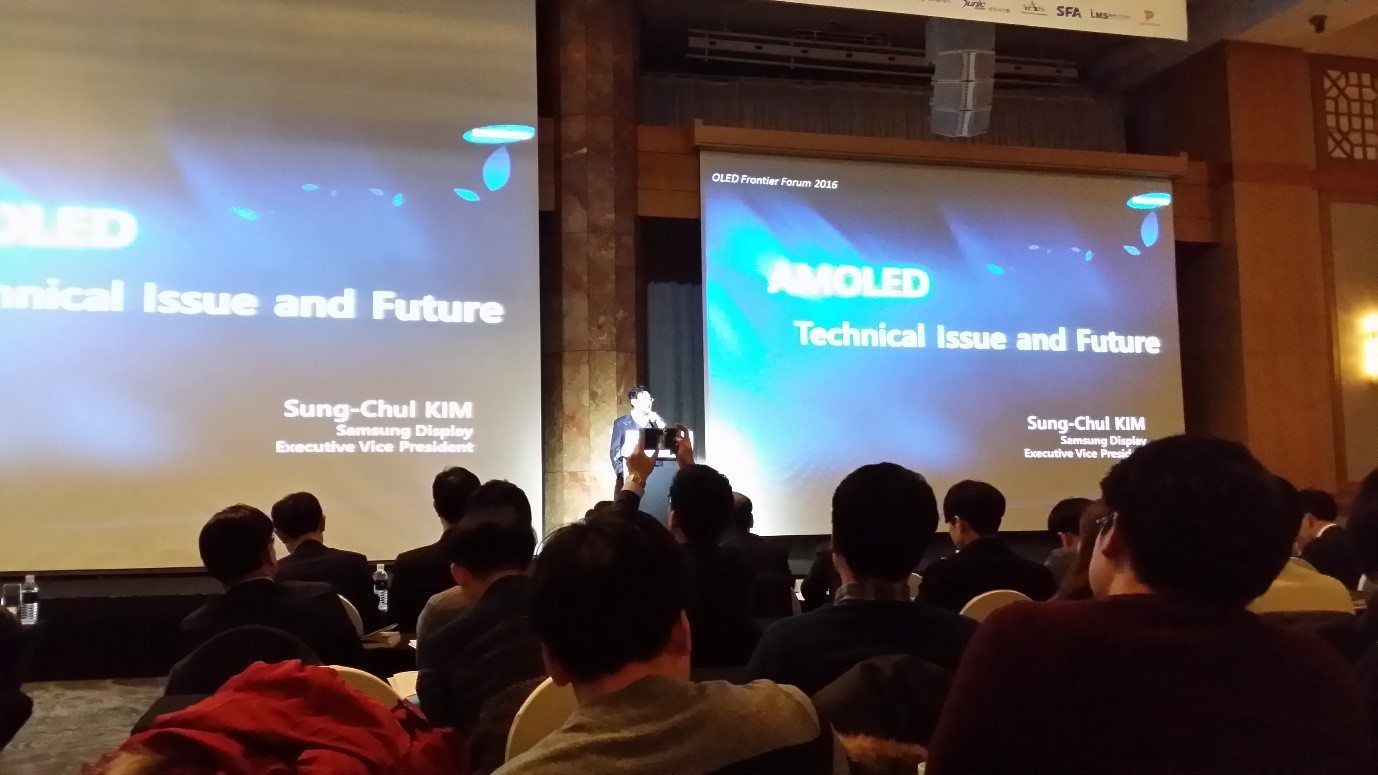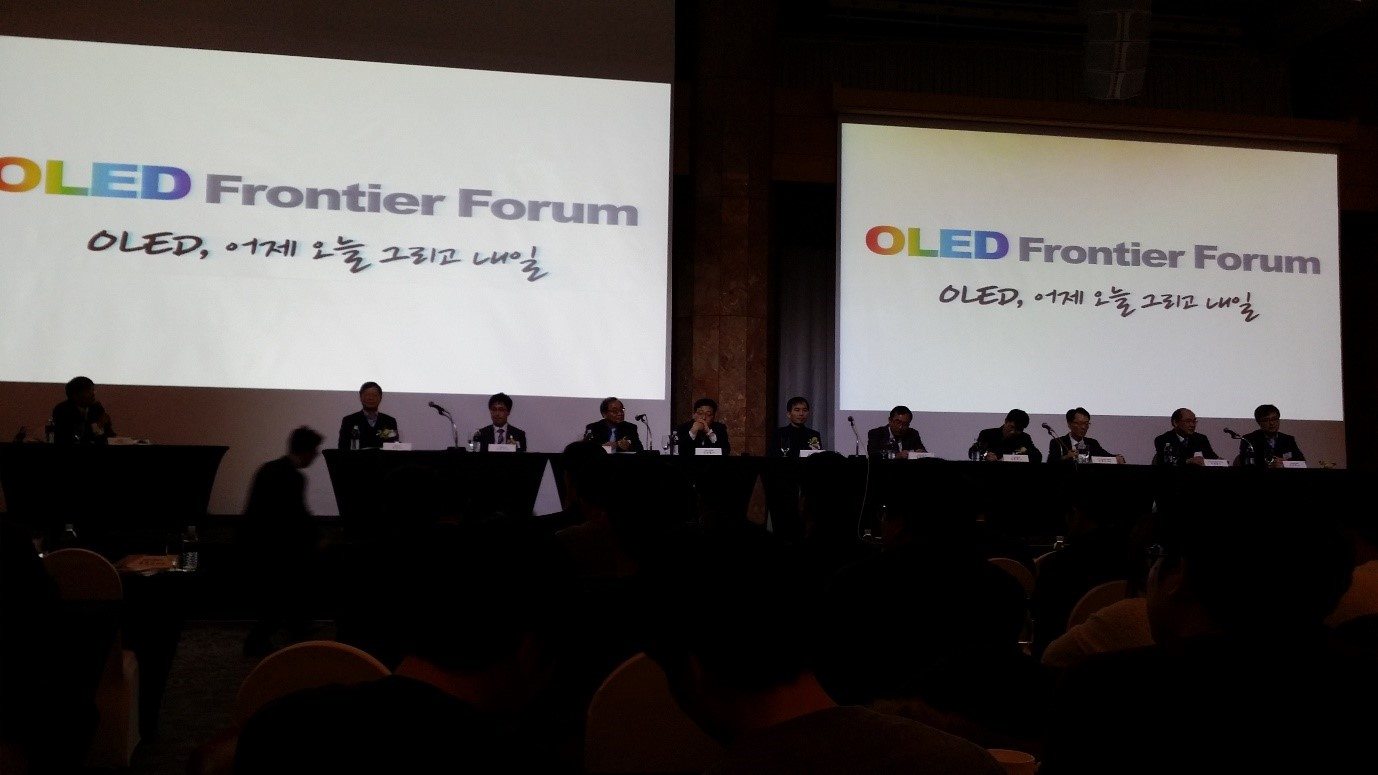In-byeong Kang, CTO of LG Display, Discusses the Past, Present, and Future of Large Area OLED Panel
On January 28, Korea Display Industry Association organized the 1st OLED Frontier Forum in JW Marriott Hotel Seoul.
Under the title ‘OLED, Yesterday, Today, and Tomorrow’, the forum attendees could review Korean OLED research results of the past 20 odd years, and discussed regarding future OLED industry growth strategy.
LG Display’s CTO In-byeong Kang gave a presentation on Large Area OLED Status and Future and talked about the current status and forecast of large area OLED which is expected to become the key area of future display.
Since the mass production of first 55 inch OLED panel that utilized WRGB method and oxide TFT, 3 years went past. During those 3 years, Kang revealed that many innovations were carried out in terms of TFT device, compensation algorithm, OLED device, OLED materials, and processes.
First, the oxide TFT structure changed to coplanar method from etch stopper method, and for compensation wiring, the internal compensation was changed to external compensation. Also, he revealed that through much effort, the existing OLED device and materials were changed to new structure and high efficiency and high color gamut OLED emitting materials. Kang added that the uniformity, which becomes the most crucial point in large area OLED panel mass production, was greatly improved in Gen8 manufacturing equipment.
In 2013, there was only 1 LG Electronics’ OLED TV, 55 inch FHD, but recently 77 inch and 65 inch were added, and the resolution increased to UHD. Kang emphasized that although the 2013 product was priced at 11 million KRW with 100/400 nit of brightness but recent products have brightness of 150/450 nit at the reduced price of 4.2 million KRW.
LG Display is going through many changes recently. OLED business department began operation from last year. Large area OLED panel, which started with 8K monthly mass production at Gen8, is now being produced at 26K in full operation. Also, additional investment of 10 trillion KRW to large area panel has been decided, and new factory is being built in Paju. Kang told the audience that he heard many positive views on large area OLED at CES, and that there was a huge response regarding the 77 inch HDR video. Kang revealed confidence in the technology reporting that rather than replacing LCD, OLED could succeed as a totally different display.
Regarding the next 20 years, Kang forecast that the flat will move toward transparent and flexible, and OLED is the most suitable for this. He explained that the Korean government estimated this and is carrying out national project titled ‘≥60 inch UHD level transparent flexible display and applicable IT fused infotainment system development’ for the past 4 years. LG Display is responsible for this project’s overall consortium, and is planning to reveal UHD level 60 inch transparent flexible OLED panel in 2017 summer when the project is complete.
At the end of the presentation, Kang summarized 3 innovation factors for large area OLED. First, the substrate materials at Gen8 has to change to PI and transparent PI. Second, even for flexible substrate, the structure has to change to top emission from bottom emission, and lastly, Kang added that much more diverse applications have to be considered for flexible panel.


